
Alasdair Baverstock, The Guardian, March 12, 2015
Anyone who hides under the duvet during a thunderstorm should look away now, but those who love the theatre and excitement of a good bout of thunder and lightning should consider visiting one spot in South America, if they ever pass that way.
South America’s largest body of water, Lake Maracaibo in Venezuela, is the site of “the most frequent lightning in the world”, according to Graeme Anderson, an expert on the subject at the Met Office. The heat and humidity are at optimum levels here, and with the addition of wind caused by the surrounding Andes, the lightning is the most intense and predictable in the world.
Spectacular storms are a crowd-pleaser, and something people are now prepared to pay to see, so the lakeside fishing communities now welcome tourists on special trips from Mérida, a lively Andean town in the north-west of the country. I joined them on a tour led by Alan Highton, a pioneer of tours that make the most of what is called Catatumbo lightning, after the river that flows into the lake.
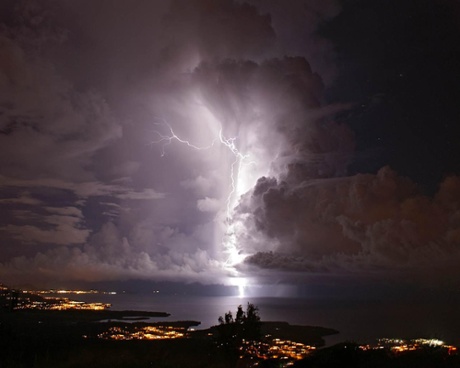
A flash of Catatumbo Lightning in Zulia, Venezuela. Photograph: Alamy
Towering storm clouds were already visible on the horizon as my group drove from frosty Andean peaks down to desert and then tropical rainforest.
At the head of an inlet speedboats waited to whisk us out on to the lake. The jungle around us teemed with life and we could hear the shrieks of howler monkeys, the world’s loudest terrestrial animal, before we emerged, under massive skies, on the lake, an expanse of over 5,000 square miles. Storm clouds were brewing in the distance. The soft rolling of their thunder reached us as we powered onwards to Ologa, the lakeside fishing community where we were to stay.
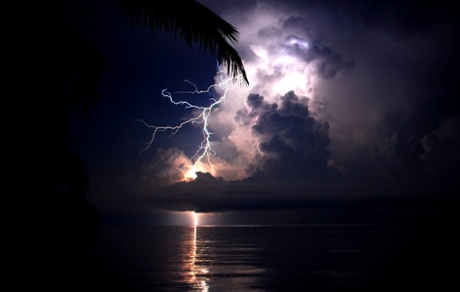
Catatumbo lightning, Venezuela. Photograph: Alan Highton
Alan’s house is on the edge of the village. He told us it was here that Professor Brian Cox was attacked by a bat during a filming visit, the creature having found its way into his mosquito net during the night.
Venezuela actually takes its name from Lake Maracaibo’s water-world settlements. The rows of huts constructed on stilts atop the calm water put the first Spanish explorers in mind of a Little Venice, and the name stuck.
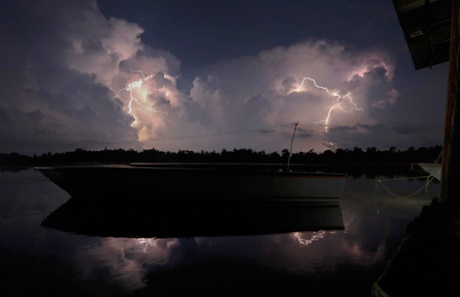
Lightning strikes over Lake Maracaibo in Congo Mirador village. Photograph: Jorge Silva/Reuters/Corbis
The region is home to jaguars, alligators, boa constrictors and other exotic fauna, so we filled the daytime hours wildlife watching. Butterflies are Alan’s speciality: he lures them with a seven-metre net and rotten bananas. In the evening, we met the local community, most of whom have been pleasantly surprised by the growing interest in thunderstorm tourism.
“It’s nothing unusual for us, so it’s funny that people come to watch what I see from my hammock every night,” said Daniel Bracho, a smiling 16-year-old charged with keeping the village’s electricity generator running on government-subsidised petrol.
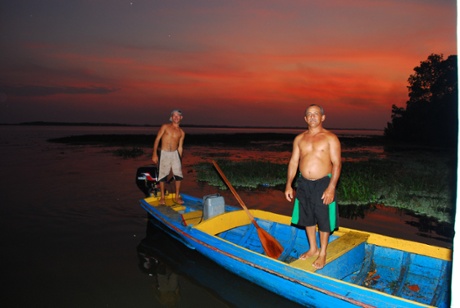
Villagers are surprised but pleased at the popularity of lightning tourism. Photograph: Alan Highton
Night falls quickly this close to the equator, and soon we were absorbed in star-gazing. Meanwhile, the lightning show was tuning up in the far distance, ready to burst on to the stage in the small hours.
The low-growling thunder grew louder, setting the scene for the opening act of a major storm far off across the lake, electrifying the horizon. The palm-dwelling monkeys retreated into denser bush as the atmosphere began to sway their treetop dwellings, and we carried our chairs to where we might better witness the action. Suddenly, the first enormous bolt leapt to earth, followed by a roar of thunder that reverberated through the foliage.
Backlit by sheet lightning, gigantic storm clouds swelled high into the tropical night air, obscuring the star-strewn skies to the east. Then forks of lightning exploded in all directions, the larger ones burning their impressions on to our retinas so that, closing my eyes following a strike, I could review the bolt’s jagged form as it had powered through the atmosphere back to earth.
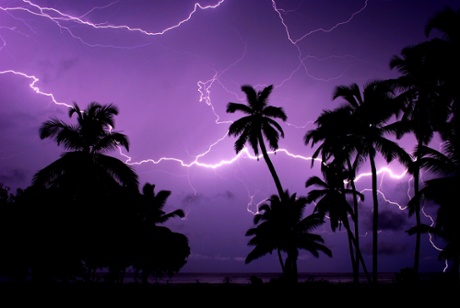
Bright-white roots zigzag down into the water of Lake Maracaibo. Photograph: Alan Highton
The flat-bottomed clouds sent their bright-white roots down into the ground, and more localised storms began to contribute to the show. Eventually, the lightning strikes became uncountable; the world had become an enormous strobe light. It was as bright as daylight.
We no longer needed coffee to keep us attentive, even in the small hours. Eventually dawn crept across the expanse of water before us, and the storms slowed. Exhausted by nature’s astonishing show, we crawled back to our hammocks and dropped off almost immediately, coaxed to sleep by the echoes of nature’s thunderous lullaby. And the fishermen, starting work early to avoid the intense midday heat, began their speedboat commutes out on to the water, silhouetted against the brightening eastern skies.
• The trip was provided by Alan Highton of Catatumbo Camp (+58 414 756 2575, catatumbotour.com), who runs three-day/two-night tours to see the Catatumbo lightning from $140pp, including accommodation, food and transport from Mérida. Posada Casa Sol (posadacasasol.com) is a fine boutique hotel in Mérida, which costs, officially at least, over £200 a night. However, the writer adds: “Given the economic situation and the black market exchange rate, travellers will actually end up paying around a fiver a night. Travellers to Venezuela should only take cash, and under no circumstances use their banker’s cards or pay online in advance for anything in bolivars (BsF).”
Taken by storm: more extreme weather tours
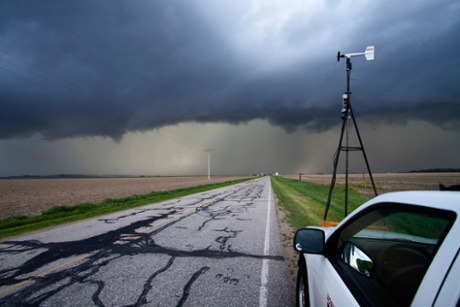
Storm chasing in Nebraska. Photograph: Alamy
United States
The world’s most famous region for storm tourism is the huge slice of the American Midwest known as Tornado Alley, encompassing Oklahoma, Texas, Kansas, and Nebraska, Colorado and parts of other states. Tornados arise when cold dry air from the Rockies meets moist air from the Gulf of Mexico and hot, dry air from the Sonoran desert causing atmospheric instability and intense weather. The peak season for storm chasing in Tornado Alley is May and June. British company Weather Holidays still has availability on 10-day trips starting from Dallas or Denver on 10 and 23 June, from £1,700pp, flights extra.
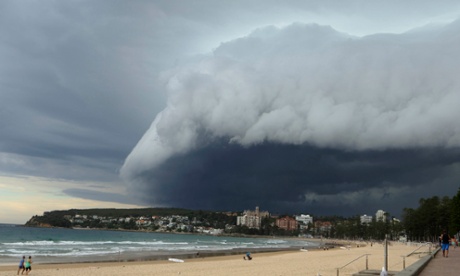
Storm clouds loom over Sydney’s Manly Beach. Photograph: Will Burgess/Reuters
Australia
Follow severe thunderstorm outbreaks across eastern Australia with Sydney-based Thunderbolt Tours. In November, December and February, clear skies rapidly give way to spectacular supercell thunderstorms with incredible lightning, powerful winds and violent hail. Tailormade trips from one to 10 days start at A$400 a day.
Canada
For a more wintry storm experience, Storm Chasers, from operator Kicking Horse Powder Tours, takes visitors heli-skiing, cat-skiing and backcountry ski touring in the interior mountain ranges of British Columbia, following huge snow dumps in a region known as the Powder Highway. Travel is in a luxury coach with TV lounge, kitchen and bathroom. Prices are luxury-level, too: a seven-day trip from 4 April costs $5,995pp, half-board, flights extra.
• This article was amend on 11 March 2015. The writer has added a note about Venezuela’s exchange rate in the practical details at the end of the piece.
This article originally appeared on guardian.co.uk
This article was written by Alasdair Baverstock from The Guardian and was legally licensed through the NewsCred publisher network.
![]()